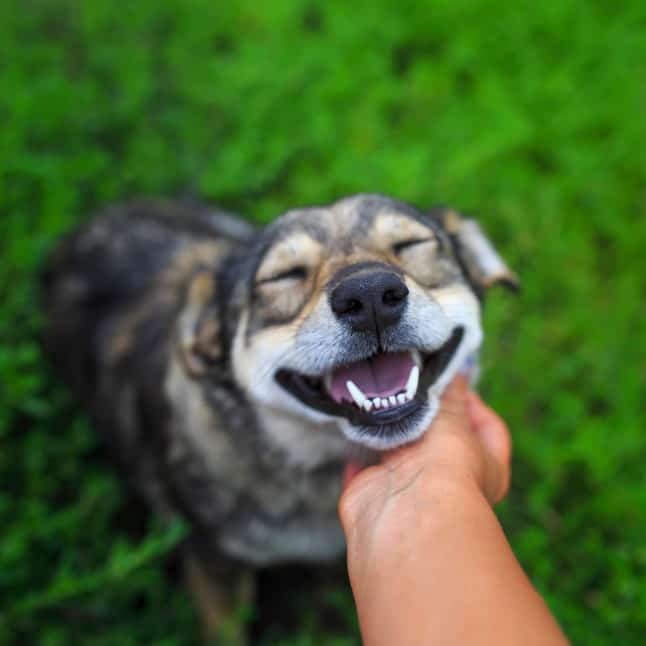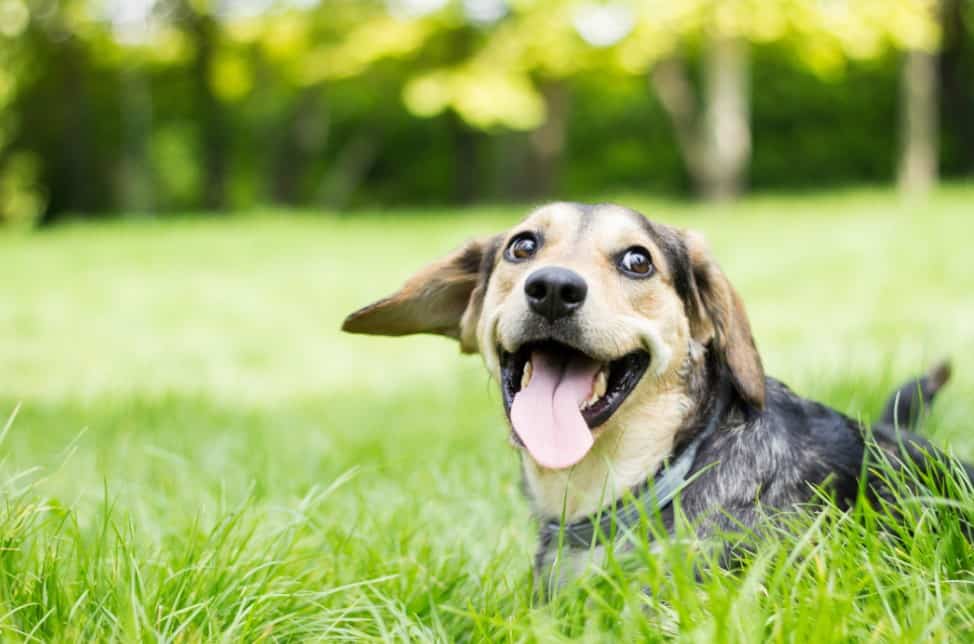Dog training is now commonplace in many parts of the world. Not only are dogs trained to be obedient and well-behaved, but they can also be trained for many different purposes to help us in our daily lives. Service dogs and police K9s have been in use for decades, and we are now seeing the advent of new ways to train dogs, such as conservation detection dogs.
We almost take the art of dog training for granted nowadays, but have you ever thought about how dog training actually started? What was it that caused canines to become man’s best friend? How did it come to pass that dogs could be trained to reliably perform a number of tasks?
In this article, we’ll look at the history of dog training and explore how it has developed from thousands of years ago up to the present day.
The very beginning of the human-canine connection
Dogs were one of the very first animals to be domesticated by humans. Research indicates that humans started to domesticate wolves somewhere between 20,000 to 40,000 years ago.
There are two main theories surrounding how the connection between humans and dogs started to form. The first is that humans started to steal wolf pups and brought them back to their communities and camps. The second theory is that wolves began to learn that they could get food easily from human tribes – and the braver, more social wolves started approaching these camps to get food.
Not enough information is available to discern which theory is absolutely correct. However, whichever theory holds true, one thing is for certain – humans and dogs started to form an unbreakable bond which has lasted to this day.
The first working dogs
As the use of dogs became more widespread, they were utilized for a number of different jobs, such as:
- Herding
- Guarding
- Pulling carts
- Hunting
For a long time, people would use dogs to work and perform tasks, rather than keep them as pets. Obedience training and canine psychology wasn’t really prevalent at all during this time – dogs simply worked with humans to fulfill specific purposes.

In its very beginning, dog training actually started off with a very dominance-based approach. There was even a point where it was believed that animals didn’t experience physical pain and people would put their dogs through some terrible things just because they were animals.
The concept of canine psychology didn’t arise until the 1900s, and even then it was slow to develop. A couple of prominent psychologists did experiments on dogs or other animals to try and learn more about the way that they think.
Ivan Pavlov, B.F. Skinner and progress
Ivan Pavlov was a Russian psychologist who began studying the canine digestive system sometime around 1890. He was also the father of ‘classical conditioning’ (also referred to as Pavlovian conditioning). Classical conditioning essentially refers to the continuous pairing of two stimuli, typically either neutral or a neutral paired with a significant stimuli.
Although it is commonly believed that Pavlov rang a bell before feeding his dogs, there is a lot of speculation regarding this. Pavlov found that dogs actually formed a neurological connection with the sound that precedes the food. For example, Pavlov’s assistant would enter the room with food and the assistant’s footsteps would cause the dogs to salivate.
Later in the twentieth century, B.F. Skinner created the ‘Skinner Box’. He would put animals such as pigeons inside the box and allowed them to move around in it. Usually by accident, the pigeons would learn that if they hit a certain part of the box, food was deposited. Very quickly, the animals would learn to continuously hit that part of the box. It was through experiments like the Skinner Box that the basis of what we now know as ‘operant conditioning’ was formed.

Operant conditioning and developments in dog training philosophy
Operant conditioning is a method of learning through which actions result in consequences. There are four quadrants of operant conditioning:
- Positive reinforcement – the addition of a pleasant stimulus in response to a behavior (e.g. offering treats, letting your dog play, giving it praise).
- Negative reinforcement – the subtraction of an undesirable stimulus in response to behavior (e.g. if your dog doesn’t like to be walked on a leash, when you head to the dog park, you decide make the dog sit before unhooking the leash. The dog finds the leash unpleasant, so removing the leash is its reward).
- Positive punishment – the addition of an undesirable stimulus in response to a behavior (e.g. smacking the dog with a newspaper, spraying with a water bottle, screaming at your dog, the pinch of a prong collar).
- Negative punishment – the subtraction of a pleasant stimulus in a response to a behavior (e.g. taking your dog’s bone away when they growl at you).
Actions which result in desirable consequences will typically occur more frequently; actions resulting in undesirable consequences will typically happen less frequently (or not at all). In its simplest form, it is now believed that the majority of natural learning occurs through a combination of classical and operant conditioning.

Think about it this way – if you touch a stove and get burned, you will probably think twice about doing it again. But if you go to your bedroom closet and find a $50 bill every time you open it, you will probably go back there at some point to look for money again.
In 1910, Konrad Most published a book called Training Dogs: A Manual. He primarily trained police and military dogs, in addition to guide dogs. Many of the techniques used for dog training in his book were compulsion-based. This means that they tended to use mostly positive punishment – discomfort, pain and force – essentially adding aversive repercussions to get results.
In the United States, dog training started growing in popularity after the Second World War with dogs becoming common household pets. In the 1980s, Karen Pryor (who specialized in training marine mammals and dogs) published Don’t Shoot The Dog, a guide to clicker training and positive reinforcement in dog training.
Many other ‘purely positive’ trainers followed, alongside a variety of other dog training styles and schools of thought which has evolved into what dog training is today.
Today’s methods of dog training
Currently, there are a wide variety of dog training methods. Some of the more popular ones are:
- Balanced dog trainers utilize all four quadrants of operant conditioning to train dogs and resolve behavioral issues. Balanced dog trainers use a combination of primary reinforcers (typically treats or toys), secondary reinforcers (such as clickers or whistles), training collars (remote collars and prong collars), combined with systematic desensitization and socialization.
- Purely positive dog trainers are still popular. Some of the more popular trainers in this field are the likes of Karen Pryor, Jean Donaldson and Ian Dunbar. These trainers use exclusively positive reinforcement to train dogs and attempt to resolve behavioral problems.
- Dominance or ‘pack leader’ trainers use the theory that dogs are still very much like their wolf ancestors and need to be treated as such (e.g. ‘strong pack leader’). Many of these trainers don’t understand that although dogs may have evolved from wolves, they are not wolves today. Hierarchy, and the way that stray or feral dogs socialize with each other, is very different than what we know of wolf culture.
- ‘Behavior Adjustment Training’ (BAT) is a force-free method, based primarily around systematic desensitization and closely monitoring your dog’s body language and reactions in order to avoid flooding or reaching over their threshold. This system is based around negative reinforcement and sometimes uses clicker training in order to mark desirable behaviors.
- Science-based training, much like balanced dog training, seeks to understand the connection between all four quadrants of operant conditioning, in addition to classical conditioning, sensitization and desensitization vs. flooding, and modifying psychological associations in dog training and how they interact with the canine psyche. This school of thought is quite new and frequently changing as scientific knowledge grows through research projects and experiments.
- Mirror training is basically a ‘do as I do’ style of training, where a handler tries to get their dog to copy them, or mirror their actions in order to learn. Dogs are great social learners, although this typically works fastest with others of their same species.
At Highland Canine, we utilize a mixture of balanced dog training and science-based dog training approaches. This allows us to tailor our approach to dog training based on the needs of the dog.
In summary
In its infancy, dog training was simply a means to an end for humans. It allowed us to teach dogs to help us with difficult tasks and make our lives easier. Teaching our dogs behavior and obedience was simply not a priority.
There is a correlation between the increase in dog ownership over recent decades and the need for behavior modification and obedience professionals to train dogs. With new information and studies constantly available, our methods in training dogs are constantly evolving – a far cry from the human-wolf relationship of thousands of years ago.


You must be logged in to post a comment.